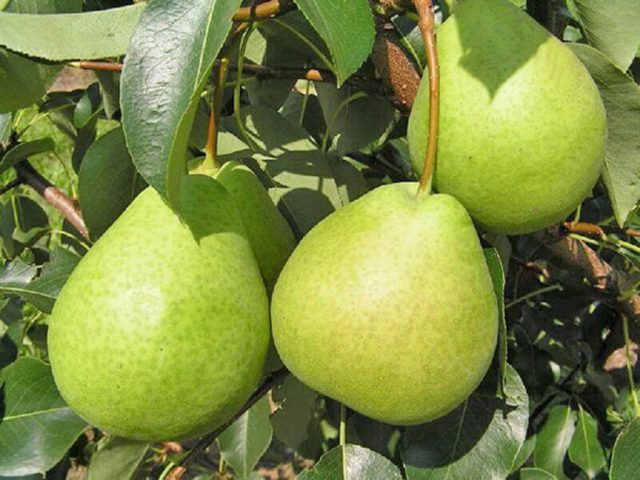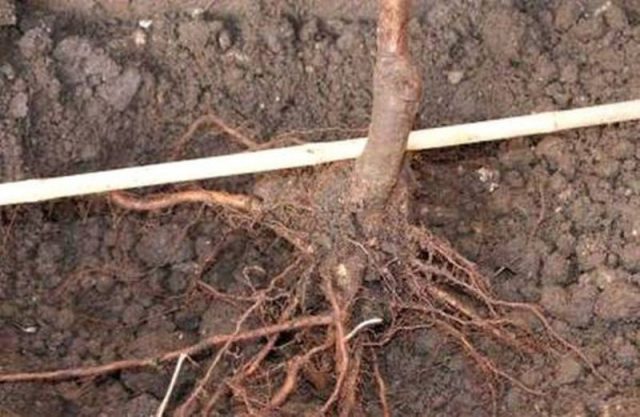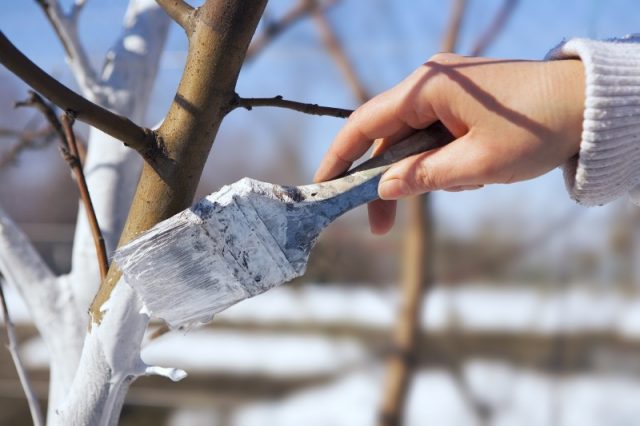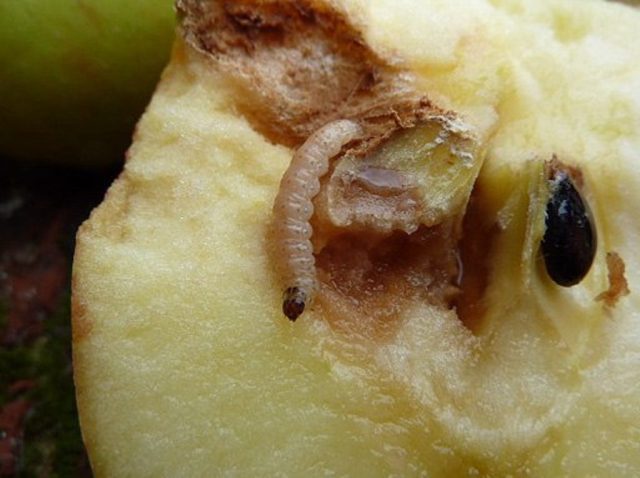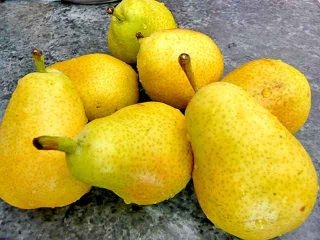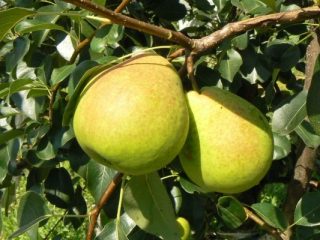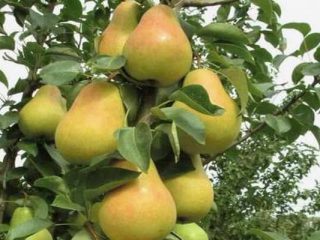Content
The taste of pear has been known since childhood. Previously, the pear was considered a southern fruit, but thanks to the work of breeders, now it can be grown in regions with an unstable climate. These varieties include the early summer children's pear. Description of the variety, photos, reviews about the Detskaya pear will allow you not to make a mistake in choosing and easily grow a tree in the Moscow region, Central and Central Russia.
Description of the pear variety Children's
The baby pear was developed by Soviet scientists as a result of crossing the interspecific hybrid No. 8 with the early maturing variety Duchess.
Judging by the gardeners' reviews, the Children's pear is an early-ripening variety. Fruits begin to pour in from mid-July to late August. A tall and durable variety forms a pyramidal crown from powerful branches. The seasonal growth of branches is about half a meter.
Pear-shaped fruits look beautiful against the background of oval, dark olive foliage. Flowers appear in early May, and long-term fruiting can be seen 5 years after planting. The snow-white flowers are bisexual, therefore, the cultivar does not require a pollinator.
Pear Nursery is a high-yielding hybrid, up to 40 kg of juicy fruits can be harvested from one adult tree. The tree is immune to many diseases, tolerates subzero temperatures well. Spring frosts and droughts are not terrible for the variety. This description makes it possible to grow pears both in southern cities and in regions with an unstable climate.
Fruit characteristics
Pear-shaped, yellow fruits with a pink-orange blush have a mass of no more than 80 g. The peel is dense, uneven, lumpy. The creamy pulp of the Children's variety pear is juicy, with a sweet taste.
The hybrid tends to overripe quickly, so the fruits are removed as they ripen. Children's pear is well transported and can retain its taste for 30 days. The fruits are used fresh, for the preparation of compotes and jams.
Pros and cons of the variety
Like any plant, the Children's pear has its positive and negative qualities. The positive ones include:
- early ripening;
- early maturity;
- high productivity;
- frost and drought resistance;
- self-fertility;
- unpretentious care;
- versatility in the use of fruits.
The pear has few minuses. Many summer residents consider the small size of the fruit and the need for crown formation as a lack.
Optimal growing conditions
Children's pear belongs to unpretentious varieties. Planting and growing a fruit tree is not difficult, even a novice gardener can cope with this activity.
To obtain a high yield, it is necessary to observe the planting time, choose the right place and seedling.
Planting works of the Children's pear variety can be carried out in spring and autumn. Experienced gardeners recommend planting seedlings in the fall, a month before the onset of frost. Spring planting is carried out after thawing of the soil, before bud break. When planting in spring, the survival rate is low, since the tree needs to spend a lot of energy on the development of the root system and the growth of young foliage and new shoots.
The choice of location plays an important role for planting a seedling.Children's pear prefers to grow on well-drained, nutritious soil with deep groundwater. If the soil is heavy, clayey needs to be improved. To do this, when digging, sand, humus and mineral fertilizers are introduced, this will not only improve the structure of the soil, but also make it fertile.
The root system of a pear tree is well developed, it goes 6-8 m deep into the ground. Therefore, if the groundwater is located superficially, there is a possibility of decay of the root system.
The landing site should be well lit, on the south side of the site, protected from gusty winds.
It is better to purchase a pear seedling in nurseries or from trusted suppliers. For better survival, the age of a young plant should be 2-3 years. When choosing, you need to check the root system. It is better that it consists of 3 well-developed main roots, surrounded by a network of small roots. The trunk must be free from mechanical damage and free from signs of disease.
Typically, a garden pear is grafted onto a quince or wild seed pear. The term of the first ripening and the height of the tree depend on the scion. When grafted on quince, the first crop appears 3 years after planting, the crown reaches up to 5 m.On a pear graft, the crop is harvested after 5 years, the plant height reaches more than 5 m. The grafting site should be well spliced, without cracks, spots and growths.
Planting and caring for a children's pear
According to the characteristics of the Children's pear, it can be seen that it is unpretentious in care and easy to grow. The yield and quality of the fruits depend on the correctly carried out planting.
Landing rules
Step-by-step instructions for carrying out planting work:
- 30 days before planting, dig a hole 1 m deep and 80 cm wide.The distance between the planting holes should be at least 5 m.
- The extracted soil is mixed with 30 liters of humus and 10 liters of sand. When planting on poor soil, complex mineral fertilizers are applied.
- The prepared soil is poured into the landing hole with a mound and spilled abundantly. After the soil has completely settled, you can start planting the seedling.
- If the plant is purchased with an open root system, it is kept in a bucket of warm water for 6 hours.
- Before planting, the roots are straightened and carefully laid out on a prepared mound. Next to the tree, 1 m of pegs are driven in.
- Before filling the ground, you need to make sure that the root collar is 4-5 cm above the ground.
- The hole is filled with soil, compacting each layer to avoid the appearance of an air cushion.
- The top layer is compacted and spilled abundantly.
- The seedling is tied to a support, the trunk circle is mulched with straw, foliage or peat.
Watering and feeding
Children's pear is a drought-resistant variety, so watering is carried out as the trunk circle dries out. Regular watering is very important for a young seedling, since the root system has not matured and during a drought is not able to provide the tree with moisture. For seedlings, irrigation should be weekly, 2 buckets of warm water for each instance. To retain moisture, the soil around the trunk is mulched with straw, peat or sawdust.
After each watering, loosening is carried out to a depth of 15-20 cm. Hilling will prevent the appearance of pests, enrich the soil with oxygen, and improve gas exchange.
If the pear grows on fertile soil, it does not need feeding. If on poor soil, top dressing is applied 3 times per season:
- in the spring - organic matter and nitrogenous fertilizers;
- in summer - complex mineral fertilizers;
- in the fall - phosphorus-potassium dressing.
Throughout the season, you can spray the crown with ash infusion, it will become a foliar top dressing and scare away unexpected pests.
Pruning
Children's pear needs crown formation and sanitary pruning. Sanitary pruning is carried out in early spring before sap flow begins. To do this, remove frozen, damaged and broken branches.
Pruning has a bad effect on the growth and development of the pear, so experienced gardeners resort to the formation of the crown mechanically:
- Formation begins immediately after planting. Young branches bend or reject. To do this, use spacers or tie the shoots to the support.
- Branches at an angle of 90 ° are straightened with spacers.
- Shoots growing at an obtuse angle are tied to the trunk.
Numerous shoots obscure the sun, slow down the growth of flowers and the formation of fruits, therefore, when forming the crown, 6 main branches are left. The branches of the crown growing at the lower level are considered skeletal. For this, 3 strong healthy shoots are left along the trunk diameter. The next level is formed after the shoots of the lower tier get stronger, gain strength and start growing. To form the 3rd and subsequent tiers, the central conductor is sawed off.
Whitewash
Whitewashing of pears is carried out before sap flow and after the onset of the first frost. The point of whitewashing is to prevent the barrel from sunburn. Whitewashing technology:
- The trunk is cleaned of detachments, moss and fungal diseases. It is better to do this with a wire brush or a wooden scraper.
- Dry lime is diluted in water to thick sour cream.
- So that the whitewash does not disappear after the rains, it is diluted with laundry soap, silicate or wood glue.
- Whitewashing is carried out from the roots and 30 cm above the main stems.
- The procedure is done with a paint or straw brush.
Preparing for winter
Children's pear is a frost-resistant variety. Adult specimens do not need shelter. Young seedlings must be insulated. To do this, the trunk circle is covered with a 15 cm layer of mulch, and the trunk is tied with spruce branches.
Baby pear pollinators
The hybrid is self-fertile, which means that it does not need pollinators. But to increase the yield, you need to plant several different trees on the site, blooming at the same time. It can be a Chizhevskaya pear, Lada, Cathedral... Very often, gardeners use the Children's pear as a pollinator for other species.
Yield
Pear Children's high-yielding. Fruit harvesting begins in mid-July and continues until the end of August. Fruiting occurs 3-5 years after planting. A generous harvest, more than 10 kg, can be removed from one adult specimen.
Diseases and pests
Children's pear has a strong immunity to many diseases. But if the rules of care are not followed, the tree can be hit by pests:
- Green aphid. Sweet secretions contribute to the development of sooty fungi. The first treatment is carried out in early spring before bud break with Kinmix. The second spraying is carried out before flowering, and the third at the stage of fruit formation.
- Pear caterpillar - affects the sweet pulp. Insecticides will help get rid of insects.
- Medianitsa - the pest sucks the sap from the tree. If timely treatment is not carried out, the pear dries up and dies. To combat, use insecticides, infusion of dandelion or medicinal chamomile, or a decoction of yarrow.
As a preventive measure in the spring, the plant is treated with colloidal sulfur or Zircon. This drug will not only prevent the appearance of pests, but also increase resistance to diseases, adverse weather conditions.
Reviews of the children's pear variety
Conclusion
Children's pear is an unpretentious variety that has become popular with gardeners. Its tender, sweet pulp is loved not only by children, but also by adults. Before purchasing a seedling, it is necessary to study the description of the variety, photos and reviews about the Children's pear. With a minimum of effort, she will reward a generous, early and beautiful harvest.
